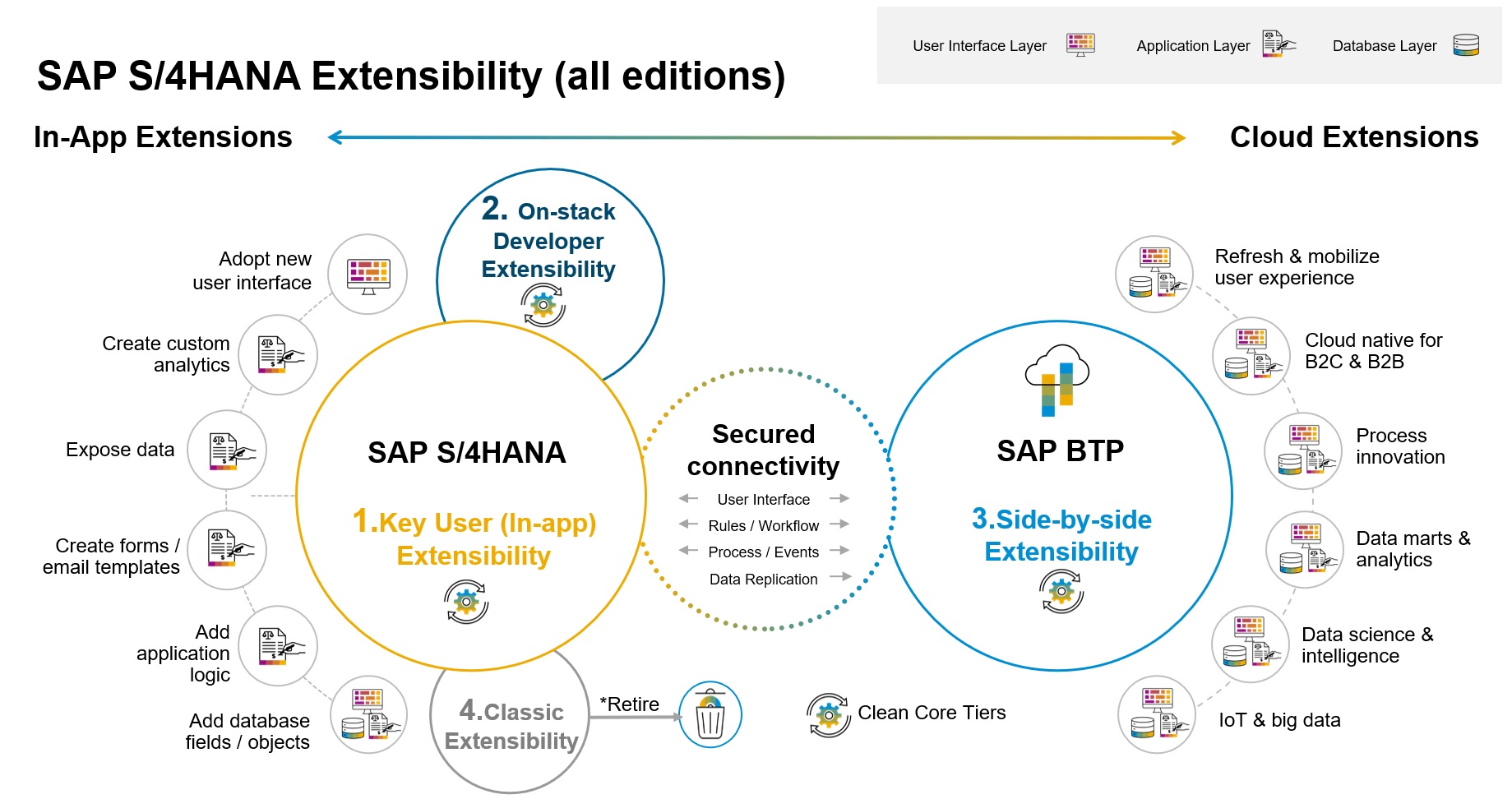 Anthony Cecchini is the President and CTO of Information Technology Partners (ITP), an ERP technology consulting company headquartered now in Virginia, with offices in Herndon. ITP offers comprehensive planning, resource allocation, implementation, upgrade, and training assistance to companies. Anthony has over 20 years of experience in SAP business process analysis and SAP systems integration. ITP is a Silver Partner with SAP, as well as an Appian, Pegasystems, and UIPath Low-code and RPA Value Added Service Partner. You can reach him at [email protected].
Anthony Cecchini is the President and CTO of Information Technology Partners (ITP), an ERP technology consulting company headquartered now in Virginia, with offices in Herndon. ITP offers comprehensive planning, resource allocation, implementation, upgrade, and training assistance to companies. Anthony has over 20 years of experience in SAP business process analysis and SAP systems integration. ITP is a Silver Partner with SAP, as well as an Appian, Pegasystems, and UIPath Low-code and RPA Value Added Service Partner. You can reach him at [email protected].
Digital Transformation has become a critical component of success in today’s fast paced business landscape. To stay competitive, companies must embark on this Digital Transformation journey, whether by starting from scratch or building on their existing investments. However, a key consideration in future-proofing an organization is ensuring a clean core.
In the realm of enterprise resource planning (ERP), SAP stands as a cornerstone for many organizations, underpinning the vast array of business processes that drive day-to-day operations. The concept of maintaining a “clean core” within SAP systems, particularly SAP S/4HANA, is pivotal to ensuring operational efficiency, adaptability, and future-readiness. In our last blog “Modern Integration For S4HANA” we discussed the clean core concept. In this blog post we will delve into the significance of a clean SAP core, the challenges of deviating from this principle, and strategies to uphold it through extensibility and best practices.
At its essence, a clean core in an SAP environment refers to the preservation of the standard, unmodified SAP system, free from customization that can entangle the core operations and hinder upgrades or innovations. This principle is paramount for several reasons:
- Future-Proofing: Ensuring a clean core within your SAP system is akin to laying a flexible and robust foundation for your enterprise’s digital infrastructure. This strategic approach allows your system to remain nimble, ready to embrace emerging technologies and adapt to shifts in the business environment with ease. By preserving the core’s integrity, you position your organization to seamlessly integrate future innovations, thereby safeguarding your competitive edge in an ever-evolving marketplace. This foresight not only prepares you for upcoming technological trends but also ensures that your system can evolve without the need for extensive overhauls, making the journey towards digital transformation smoother and more efficient.
- Operational Stability: The concept of a clean core is central to achieving unwavering operational stability within your SAP environment. By refraining from unnecessary customization and modifications, you ensure that the system’s fundamental operations remain unaffected and reliably performant, serving as a dependable backbone for all your business activities. This stability is crucial, especially in scenarios that demand high availability and precision, ensuring that your business can continue its operations without interruptions. Maintaining a clean core effectively reduces the risk of system failures and operational glitches that can arise from complex customization, thereby ensuring that your critical business processes are insulated from potential disruptions, leading to improved operational resilience and continuity.
- Cost Efficiency: Adhering to the principle of a clean core in your SAP system directly contributes to enhanced cost efficiency across your technological landscape. This practice significantly reduces the accumulation of technical debt—a byproduct of extensive customization and modifications—which can otherwise lead to spiraling costs in system maintenance, updates, and troubleshooting. By minimizing the need for custom fixes and adjustments, you not only lower immediate maintenance expenses but also mitigate the risk of future financial burdens associated with upgrading or overhauling a heavily customized system. Furthermore, this cost-effective approach frees up valuable resources, allowing your organization to allocate budget towards innovation and strategic initiatives rather than expending it on managing and rectifying the complexities introduced by a cluttered system core.
Not following the principle of maintaining a clean core can manifest in various forms, each with its set of challenges:
- Code Customization: Tweaking SAP’s standard code directly can entangle your system in a web of complexities, especially when it’s time to apply updates or patches. This practice risks anchoring your operations to an outdated version of the system, making it challenging to leverage new functionalities or security enhancements, ultimately hampering your ability to stay current and competitive in a rapidly advancing technological landscape.
- Improper Data Use: The misuse of SAP’s database tables or the repurposing of fields for functions they were not designed to handle can significantly impair your system’s performance and compromise data integrity. Such practices can lead to inaccurate data reporting, slower system response times, and, ultimately, a decline in the trustworthiness of your data-driven decision-making processes.
- Process Complications: Relying too heavily on custom processes and sidestepping SAP’s recommended best practices introduces inefficiencies and creates operational bottlenecks. This deviation can lead to convoluted workflows, increased error rates, and a general slowdown in operations, making it difficult to maintain smooth and efficient business processes that are vital for your organization’s success.
- Extension and Integration Issues: Integrating non-standard add-ons or establishing connections using unconventional integration methods can jeopardize the stability of your SAP system and cloud its upgrade path. These actions may introduce compatibility issues, making future system enhancements more cumbersome and risky, thus potentially limiting your ability to adopt new features or maintain a secure and efficient system environment.
SAP S/4HANA offers a robust framework for extensibility that enables organizations to tailor the system to their unique needs without compromising the core. This extensibility is categorized into key user, on-stack developer, and side-by-side extensibility, each serving different use cases and requirements.
- Key User Extensibility: This user-friendly extensibility option democratizes the customization of SAP systems by enabling users to tailor standard functionalities to their specific needs using intuitive no-code or low-code tools. It’s particularly beneficial for users with limited technical background, allowing them to make necessary adjustments swiftly and efficiently, thereby enhancing productivity and user satisfaction without compromising the system’s core integrity.
- On-Stack Developer Extensibility: Designed for intricate customizations that necessitate a deep integration with SAP S/4HANA’s processes, this approach relies on traditional ABAP development practices. It ensures that any modifications or extensions are in perfect harmony with the core system’s underlying logic, thereby maintaining system stability and consistency while accommodating complex business requirements.
- Side-by-Side Extensibility: By harnessing the capabilities of the SAP Business Technology Platform (SAP BTP), this extensibility framework offers a robust solution for creating and integrating cutting-edge applications alongside the core system, without directly altering it. This approach facilitates innovation and agility, allowing organizations to extend their SAP environment’s functionality in a modular and scalable manner, thereby preserving the cleanliness and upgradability of the core system.
The side-by-side extensibility on SAP BTP stands out for its ability to foster innovation without encumbering the SAP core. This method offers numerous advantages:
- Innovation and Agility: This principle champions the swift ideation, development, and deployment of innovative functionalities, enabling organizations to adapt promptly to evolving business landscapes. By fostering an environment where new ideas can be quickly brought to life and implemented, companies can stay ahead of market trends, meet emerging customer demands, and maintain a competitive edge, all while ensuring their operations are aligned with the latest industry standards and technological advancements.
- Enhanced User Experiences: Custom applications, especially those designed for mobile platforms, empower organizations to provide highly personalized user experiences that integrate fluidly with SAP S/4HANA’s robust capabilities. This approach not only elevates user engagement and satisfaction by catering to specific user needs and preferences but also enhances productivity and efficiency by delivering intuitive, user-centric solutions that streamline workflows and business processes.
- Integration Capabilities: The SAP Business Technology Platform (SAP BTP) excels in bridging SAP systems with a wide array of external applications and services, both within and beyond the SAP ecosystem. This seamless integration capability enriches the collaborative and operational dynamics of diverse business environments, facilitating a more interconnected and cohesive workflow that leverages the strengths of various platforms to optimize business operations and drive synergistic outcomes.
- Advanced Analytics and IoT: SAP BTP stands at the forefront of enabling advanced analytics and Internet of Things (IoT) applications, providing businesses with the tools to delve into extensive data sets and manage a network of interconnected devices efficiently. This capability allows for the extraction of actionable insights and the automation of complex processes, thereby enhancing decision-making accuracy and operational efficiency across multiple business domains, from predictive maintenance in manufacturing to personalized customer experiences in retail.
Summary
To preserve the integrity and cleanliness of the SAP core, organizations should adhere to several best practices:
- Embrace Standardization: Advocating for the adoption of SAP’s inherent functionalities and established processes is fundamental in maintaining a streamlined and efficient system. This approach necessitates a thorough assessment of the true need and potential value derived from any proposed customization, ensuring that they are not only essential but also add significant value to the business operations. By prioritizing standardization, organizations can maximize the robust capabilities of SAP systems, minimize complexity, and foster an environment that emphasizes operational excellence and sustainability.
- Strategic Extensibility: When considering system customization, it’s imperative to meticulously select the most suitable extensibility approach that aligns with the specific requirements of each customization. This decision-making process involves weighing the benefits of deep integration against the overarching goal of preserving the integrity of the SAP core. By adopting a strategic approach to extensibility, organizations can ensure that their customization enhance system functionality without compromising the clean and streamlined nature of the core system, thus maintaining optimal system performance and future flexibility.
- Regular Review and Optimization: An ongoing commitment to the evaluation and refinement of system customization is essential for sustaining an optimized SAP environment. This practice entails a regular review of existing customization to identify and eliminate those that are outdated or no longer serve a critical business purpose. By proactively replacing these modifications with more contemporary SAP solutions or adopting more efficient extensibility options, organizations can ensure their SAP systems remain agile, up-to-date, and aligned with best practices, thereby avoiding unnecessary complexity and ensuring continuous improvement in system performance and usability.
Maintaining a clean core in your SAP environment is a strategic imperative that underpins operational excellence, agility, and innovation. By understanding the challenges of a cluttered core, embracing SAP’s extensibility frameworks, and adhering to best practices, organizations can ensure their SAP systems remain robust, adaptable, and primed for the future. This approach not only safeguards operational stability and efficiency but also positions the organization to seize new opportunities and navigate the complexities of the digital business landscape with confidence.





